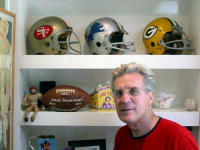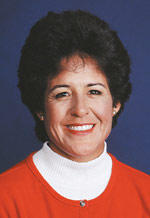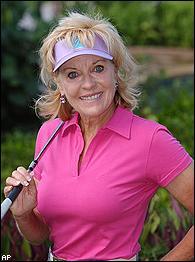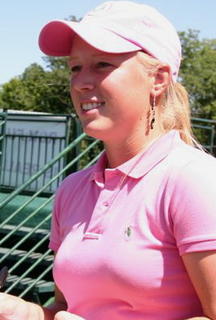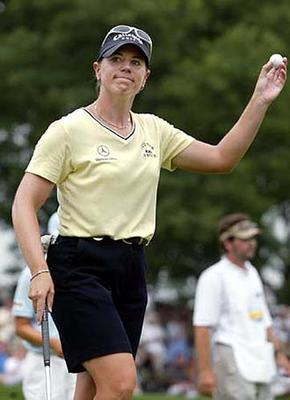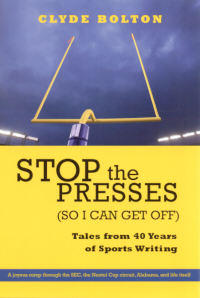This is a busy time of year in sports. We’ve got the major league baseball playoffs ratcheted up and heading toward the World Series. NFL and college football are in full swing. Hockey and the NBA are just beginning.
Clearly, it’s prime-time for the major sports networks. That means exposure to the lineup of broadcasters who take the national stage, and, at whatever level of quality, inform and entertain the home viewers. The problem is, we’ll also be exposed to some broadcasters who will annoy the heck out of us, and thus threaten to ruin the experience of watching the games or the subsequent round-ups. Yeah, we can always turn the sound down. And let’s face it, you don’t really need an announcer to tell you what happened—certainly not if you watch a good game closely.
Nevertheless, the sports broadcasting profession has reached a certain celebrity status of its own, and a wide variety of styles and personalities have proliferated in recent years. Many people don’t bother to wonder how these folks do their jobs, or if they do them well. You could argue that’s it’s all a big, subjective game of broadcast-booth roulette.
However, it would appear that, in the network hiring game, very often celebrity or status or marketability are substituted for really important broadcasting traits, such as clarity, coherence, accuracy, listenability, professionalism, humor, humility, grace and insight. There are many entertaining sportscasters I like—Al Michaels and Chris Berman come to mind—but in my opinion, some guys and gals have either stayed around too long, or should never have been there in the first place.
So, if I ran the sports broadcasting circus, I’d do a little house-cleaning. In no particular order of importance, here are the folks I’d yank off the air.
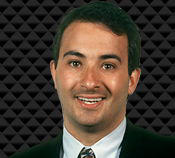 Josh Lewin
Josh Lewin When I lived in Chicago, this guy did the Cubs a season or two. He annoyed the heck out of me. Then I lost track of him, and he resurfaced on FOX. Recently, he broadcast a divisional baseball playoff game. My first thought when I saw him on camera was, “Hmmm...this guy looks like a dyspeptic raccoon caught in the headlights of an SUV.” Then I listened. He’s got one of those “I went to broadcasting school” voices, and he infused his narrative with a load of presumptive crap, for example, about how Braves star Andruw Jones was “happy to shoulder the burden for the team when everyone else was in a slump...” Well, gee, was there a chance Andruw might’ve been unhappy under any circumstance—making $10 million a year playing baseball? But I digress. I listened some more. About the third inning, I came to an amazing realization: Josh Lewin has a lisp! Now I don’t mean to be cruel, but does it make any sense to have a guy with a lisp doing play-by-play on national TV for a Major League Baseball divisional playoff game? Aren’t millions watching and listening? Obviously, the guy is trying damn hard to compensate for his impediment, yet it’s still very noticeable. I mean, what’s the standard here? In the interests of fairness and affirmative action all around, maybe we should get a guy with a cleft palate to join the broadcast team. That’d be pretty interesting, I guess. Listen, Lewin might know his sports, or he might simply be a guy who desperately wanted to avoid having a real job and used his connections to enter this world. But I’m sorry, this is broadcasting, and listening to a guy with a lisp getting through nine innings of a baseball game is outrageous, not to mention damn uncomfortable. His uncle must be a stockholder.
 Terry Bradshaw
Terry Bradshaw I’ve had it up to here with this guy. What’s the deal? Are TV execs so enamored of Bradshaw’s Super Bowl trophies that they refuse to see what a lunkhead he is? What’s really amazing is that they not only allow him to proliferate, they give him extra little features, like “10 Yards with TB” (or whatever that thing is called). Bradshaw is a boob. He’s a graceless presence on the FOX pre-game football show with James Brown, Howie Long and Jimmy Johnson, and he ruins what otherwise is a broadcast with very good chemistry. They cover it all up by casting Bradshaw as the freewheeling bumpkin, but the plain fact is that he’s no Will Rogers when it comes to wisdom. Terry Bradshaw is the #1 reason why TV needs to think twice before automatically putting ex-jocks in the studio. Put him out to pasture instead. Please. (Note: Research for this story led me to a speakers' bureau Web site, where Bradshaw was listed as an available talent. His appearance fee? $30,000-$50,000, or approximately $1,000 per IQ point.)
 Brian Baldinger
Brian Baldinger Baldinger is an ex-NFL offensive lineman and now color man for NFL football on FOX. He's also had a ton of other sports-related gigs as an "author" and commentator. There's a good amount of promotional stuff about him online, which leaves the reader with the impression that he's a solid pro. But when he's on-air, he refuses to shut up. He’s a neanderthal, plain and simple, with an endless supply of faux-macho verbiage. His booming voice is out of control, and he’s guaranteed to make you turn your volume down at 14:48 of the first quarter. Ever see the look on play-by-play man Kenny Albert’s face when they cut to the booth while Baldinger is rambling on about a load of nonsense? Poor Kenny, he’s got to endure that for three hours. We at least have remotes in hand for damage control.
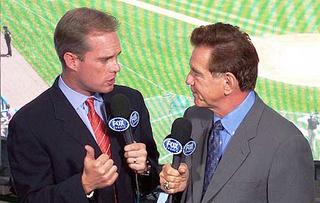 Joe Buck
Joe Buck Okay, I’ve written about this guy before. I don’t mean to beat a dead horse. Aside from my feelings about how he lucked into his career as the son of a semi-legend (Jack Buck), I am now of the opinion that, while Joe does have a decent broadcasting voice, his main problem in general is that his head is so far up his ass that he’s reached the point of no return. He’s smug, self-satisfied, humorless (despite his public avowal that he's all about humor), and he’s another guy who needs to learn that talking all the time doesn’t mean you’re doing a good job. We’re stuck with him forever probably—he's only 36—on both football and baseball prime-time broadcasts. But that doesn’t mean we have to tolerate it. For baseball playoffs, a good solution is to turn the TV down and listen instead to the ESPN radio broadcast with the excellent team of Dan Shulman and Dave Campbell. (Note: It was suspiciously difficult to locate a simple studio-style headshot of Buck for this story, which has led me to believe that "his people" are probably controlling the availability of such things in the interests of Joe's marketability. Why is this not surprising? Instead, here's a photo of Buck with his boothmate Tim McCarver, who almost made this list himself.)
 Kevin Kennedy
Kevin Kennedy This career’s a mystery. Kennedy used to be a major league manager. Now he’s Jeanne Zelasko’s alter-ego on the FOX baseball pre-game show. I wonder how Jeanne feels about him interrupting her all the time? He does it constantly. He seems to have absolutely no sense of timing, which maybe explains how he never made the majors as a ballplayer. In fact, Kennedy's record as a manager was pretty good, which makes you wonder why he didn't stick with it. Be that as it may, he’s a very clunky broadcaster. Kennedy seems like a nice enough guy, but he’s not that incisive, his personality is blah, and he just seems to be in the way. There HAVE to be plenty of other guys who could do this job better.
 Paul Maguire
Paul Maguire Paul Maguire might be Brian Baldinger’s idol. He’s one of the original bad color commentators to endlessly spew a load of macho nonsense about the players, what they’re thinking, how they feel, how rugged they are, etc., most of it projected crap that reads like a figment of Maguire’s imagination. (Sometimes it almost sounds gay.) He’s the bullhorn in the Sunday night ESPN booth with Mike Patrick and Joe Theisman, neither of whom are particularly good themselves, but come out smelling like a rose in comparison. Maguire’s been around forever, going back some 35 years to NBC broadcasts of the old AFL, following his own pro career as a punter with the San Diego Chargers and Buffalo Bills. Maguire has three modes of delivery: Loud—Louder—LOUDEST. Take some time to listen closely to what he says. It’s absolute tripe. Has he made enough money from this gig? Can we please ask him to leave now?
 Michele Tafoya
Michele Tafoya In truth, I have nothing personal against this lady. And isn’t it sweet that ABC has let her take a little maternity leave from her “Monday Night Football” sideline reporting duties? (Awwww...what a caring, multi-billion-dollar cut-throat company they are.) Maybe Tafoya is simply rewarded by the system, which says that a female MUST be doing that job. Well, her return is not happily anticipated here. She’s strictly a boring, by-the-book interviewer, throwing dumbass leading questions at usually inarticulate jocks. (“How important was this game to you?” Yuck.) Ironically, the gal who’s been replacing Tafoya recently, Sam Ryan, is strikingly good, with quick, sharp questions (as far as it goes) and a lively style. And—I know we’re not supposed to say this—she’s better looking. Maybe Michele, who is 40, should stay home with the kid.
 John Madden
John Madden Okay, this is heresy, right? And Madden is a god, right? Who is little ol’ me to demand his ouster? Yeah, he still has that folksy charm and distinctive voice, and maybe it’s kind of a soothing thing, knowing he’s there on “Monday Night Football.” But have you listened recently to some of Madden’s verbiage? He’ll say things like, “Not only the entire NFL, but EACH and EVERY team...” (Doh!) It’s been pointed out to me that Madden has always been the master of the obvious, and that’s part of the legend. I dunno, I was thinking it’s kinda dumb, and maybe this is a case of the emperor’s new clothes. I actually liked Dan Fouts a few years ago, when he was the color guy, before The Great Madden Maneuver. Whatever. I guess I can endure him. Chances are there will be no alternative.
 Sean Salisbury
Sean Salisbury Poor little Sean Salisbury. He had a pro football career of sorts
[click here] but he doesn’t seem to have ever gotten over the fact that he was a less-than-mediocre NFL QB. To compensate, he’s adopted an aggressive, arrogant, know-it-all persona on his ESPN radio and TV broadcasts. Sean always sounds like he’s trying to prove something, and it comes across as some of the most strident reporting you’ll hear anywhere. He appears completely devoid of a sense of humor and he rarely smiles, which seems peculiar for a lucky stiff who actually was paid for playing football for years even though he did very little playing, then moved into broadcasting even though he was hardly a household name. Lighten up, Sean, ya putz! Better yet, since you seem incapable of that, maybe you could just leave. There are sharper guys around (though probably none angrier).
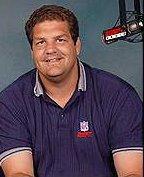 Mike Golic
Mike Golic Attacking Golic seems like kicking the dog one too many times. I’ve done it before
[click here], but I still wish he would go run a beer distributorship, which is what mediocre ex-jocks used to do. Golic’s on ESPN radio and TV. I guess he got grandfathered in on The Terry Bradshaw Clause. He’s a well-intentioned dumb guy. He’s painful to listen to. Maybe they can find a well-intentioned smart guy to replace him. But I doubt it.
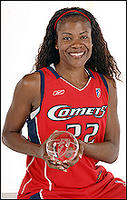 So Sheryl Swoopes is gay. The news that the star of the WNBA's Houston Comets prefers the intimate company of other women strikes me as...uh...underwhelming. I'm trying to understand why I'm not more, er, excited by the news. Or the imagery. Or intrigued. Or curious. I'm certainly not shocked. Hell, isn't everybody gay these days??
So Sheryl Swoopes is gay. The news that the star of the WNBA's Houston Comets prefers the intimate company of other women strikes me as...uh...underwhelming. I'm trying to understand why I'm not more, er, excited by the news. Or the imagery. Or intrigued. Or curious. I'm certainly not shocked. Hell, isn't everybody gay these days??